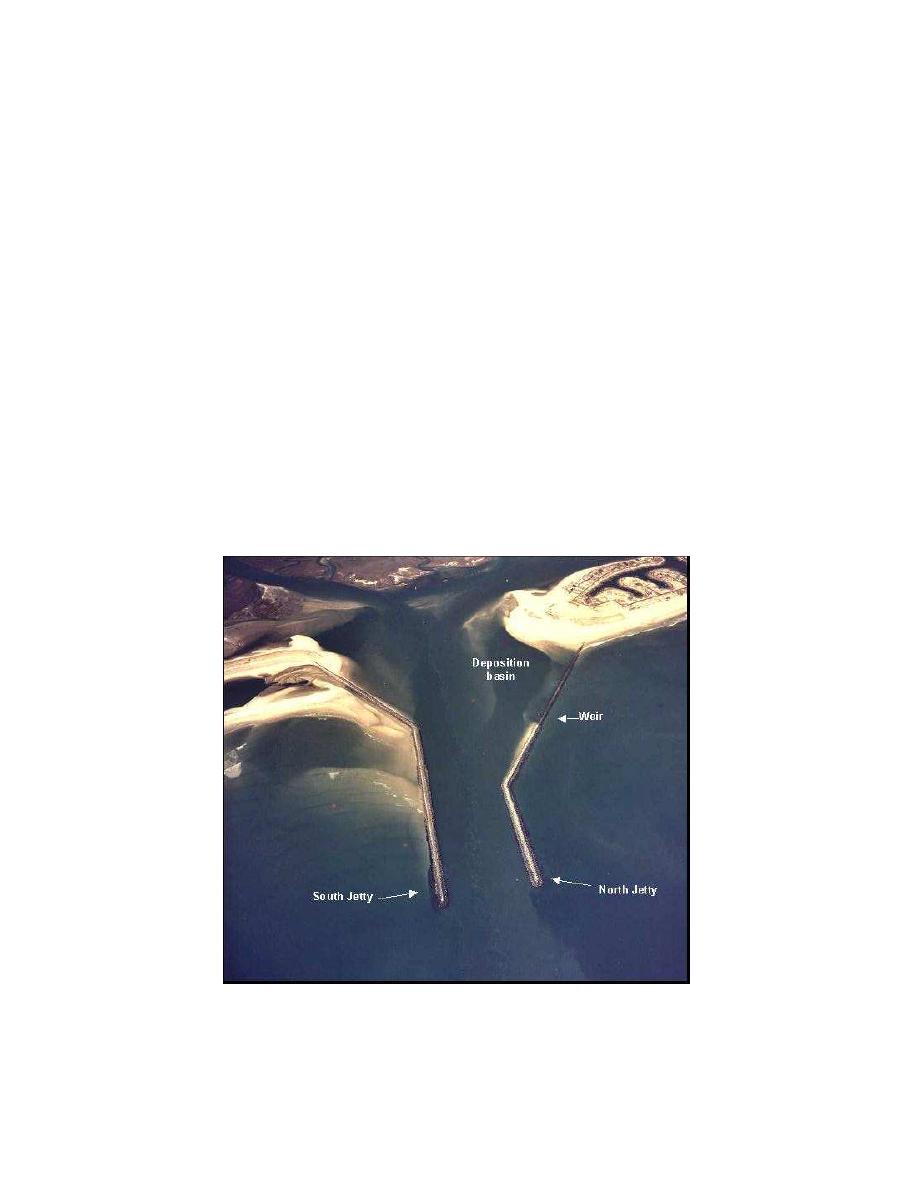
January 13, 2004
14:36
WSPC/101-CEJ
00094
545
Progress in Management of Sediment Bypassing at Coastal Inlets
passing over the weir in the north jetty was dredged between the weir section and
the entrance channel (Taylor and Yanez, 1994). In 1972, one year after north jetty
construction was completed, riprap was placed along the south side of the area
adjacent to the weir section to provide scour protection. Figure 8 shows the inlet
in 1972 with a sand spit migrating over the weir along the swash zone towards the
interior channel. By 1976, the spit has grown, and the inlet channel had reoriented
and was cutting through the deposition basin adjacent to the weir.
In 1984, the weir was closed because the impoundment basin was ineffective,
and navigation through the inlet was difficult due to the increased wave heights
and crosscurrents in the entrance (Harkins, Puckette, and Dorrell, 1997). The north
jetty continued to experience scour, while the shoreline just south of and adjacent
to the north jetty continued to recede westward. According to interpretations made
by Stauble et al. (1999), the channel is returning to pre-jetty orientation with the
weir closed.
3.1.4. Murrells Inlet, South Carolina
Murrells Inlet had migrated up and down the coast over a range of 2 km during the
last century. To stabilize the inlet location, in 1977, two armor stone jetties (Fig. 9)
Fig. 9. Murrells Inlet, South Carolina, just after completion of project construction in 1981.
Figure 9. Murrells Inlet, South Carolina, just after completion of project construction in
1981.




 Previous Page
Previous Page
